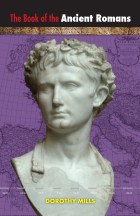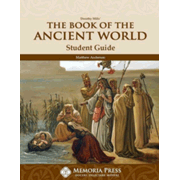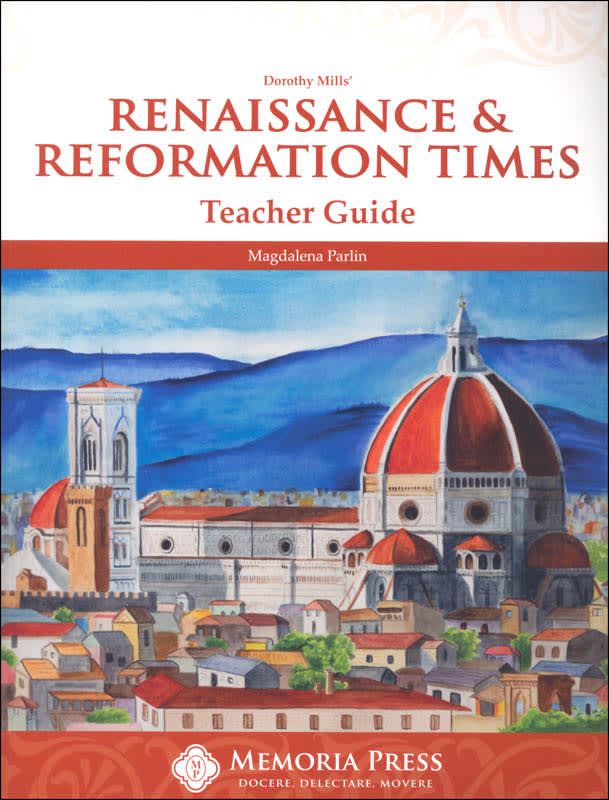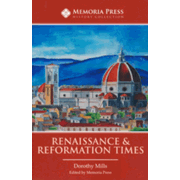Dorothy Mills wrote this excellent series of six history books around 1920 to 1940. As old editions became popular among homeschoolers, they also became scarce. As with other such books, publishers have begun to republish them, primarily for the homeschool market. Thus far, I am aware that Memoria Press and Angelico Press have republished some of these books. Titles in the series are:
- The Book of the Ancient World
- The Book of the Ancient Greeks
- The Book of the Ancient Romans
- The People of Ancient Israel
- The Book of the Middle Ages (also titled The Middle Ages)
- The Book of Renaissance and Reformation Times
While Angelico Press has republished all six, Memoria Press has republished all except The People of Ancient Israel.
Because these books were written many years ago, they don’t reflect more current discoveries. This is probably an issue affecting the ancient history books more than the others. For example, The Book of the Ancient World credits the Egyptians with the oldest form of writing, yet more recent discoveries have created competing claims by both Sumerian and Egyptian writing as the oldest. The book also says that Egypt is the source of “the first statue,” but statuary from cultures preceding the Egyptians has also been discovered.
The first three books were written as an introduction to ancient history as Dorothy Mills taught in her own classes. The level of these three books is suitable for grades six through nine. The Book of the Ancient World includes significant coverage of Israel and biblical history, so The People of Ancient Israel might be superfluous. The Book of the Middle Ages and The Book of Renaissance and Reformation Times both seem more difficult with frequent, lengthy quotations from other sources, some of them in other languages. I would recommend them primarily for high school level.
I think the reason these books are more appealing than others is because Mills uses an interesting technique of shifting between a typical history textbook style of writing and storytelling throughout all of her books. She weaves in the stories seamlessly to illustrate various historical situations and events.
Mills also writes from within a Christian worldview and a Western Civilization orientation as we would expect from someone of her era. She includes significant coverage of religious events. For the most part, throughout the series she maintains a neutral position regarding Protestantism and Catholicism, presenting positive and negative events on both sides. The Book of Renaissance and Reformation Times is surprisingly comprehensive and balanced.
All of the books have some black-and-white illustrations, but some more than others. A timeline is at the back of each book. Angelico Press includes an index at the end of each book.
The Book of the Ancient World published by Memoria Press drops the “Introduction: Pre-Historic Times” chapter that was in the original and remains in the Angelico Press edition. This introduction presents an evolutionary view of pre-historic cavemen as fact rather than conjecture.
The books themselves have no questions or assignments. If students read these books independently, parents might want a way to ensure that students are reading and comprehending the content. To that end, Memoria Press has created student workbooks and teacher guides for the books. Student books have “facts to know,” vocabulary words to be defined, comprehension questions, and activities. Activities generally include one mapwork activity and one research and/or writing activity. Teacher guides have overprinted answers and serve as answer keys.
The Book of the Ancient World is the briefest of these books at only 218 pages (Angelico Press edition). In contrast, the other books, as published by Angelico Press, range from 345 to 498 pages. So you can see that there is quite a bit of reading. The challenge is to determine how much time to devote to any one era of history. Generally, the ancient world would be part of a broader one- or two-year world history study during grades six through eight or nine. Yet, three entire books need to be covered in this series before even tackling The Middle Ages. Memoria Press incorporates the first two books into their eighth-grade curriculum. They use The Book of the Ancient Romans in ninth grade, and they incorporate The Book of the Middle Ages into their ninth-grade literature study. (Memoria Press doesn't schedule The Book of Renaissance and Reformation Times for a specific level.)
The Dorothy Mills history books are becoming increasingly well known in the homeschool world with good reason. They avoid the secularization that ignores the significance of religion in history while presenting religion in a way unlikely to antagonize either Protestants or Catholics—a difficult balancing act to accomplish. The only reservation I have is the time required to read through the books since they offer more comprehensive coverage of each time period than most other world history texts for these grade levels.






















